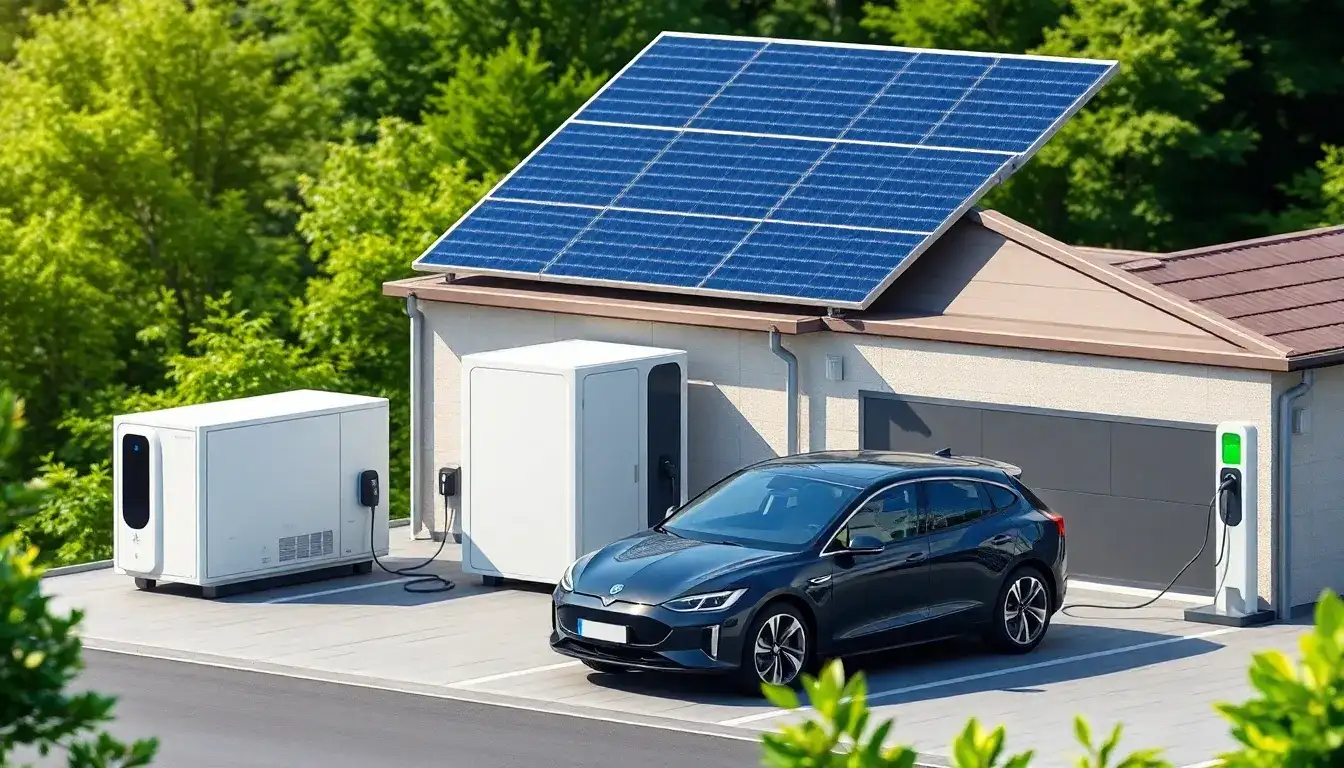
How does the integration of solar energy storage and charging create an energy ecosystem?
On March 12, 2025, the Government Work Report emphasized the importance of green and low-carbon development, reflecting a significant global shift from fossil fuels to renewable energy spurred by the “dual carbon” goals. In the field of new energy vehicles, the rapid advancement of clean energy sources like solar and wind power, alongside a surge in charging demand due to the growing popularity of electric vehicles, has led to the emergence of integrated solar energy storage and charging projects.
Technical Logic of Solar Energy Storage and Charging
Solar energy storage and charging projects combine photovoltaic power generation, energy storage systems, and charging facilities into a comprehensive energy utilization solution primarily aimed at providing green energy and electric vehicle charging services. This project operates on a cycle of “generation-storage-charging,” enabling efficient energy use and dynamic balance.
- Photovoltaic Power Generation: Solar panels convert sunlight into electricity, serving as a core source of clean energy.
- Energy Storage Systems: Technologies such as lithium batteries and flow batteries store excess electricity and release energy during peak demand or low sunlight periods, helping to stabilize grid fluctuations.
- Smart Charging: AI algorithms optimize charging strategies, support high-power fast charging, and explore vehicle-to-grid (V2G) interactions, transforming electric vehicles into mobile energy storage units.
Strategic Value of Solar Energy Storage and Charging
The integration of solar energy storage and charging plays a crucial role in reducing carbon emissions and facilitating the transformation of the energy structure. The “New Energy Vehicle Industry Development Plan (2021-2035)” published by the State Council in 2020 emphasized the efficient collaboration between new energy vehicles and renewable energy sources, making integrated solar energy storage and charging a key method for achieving low-carbon transportation.
For instance, the first solar energy storage and charging station in Changzhou’s Jintan District, set to operate in 2024, is expected to generate nearly 400,000 kilowatt-hours of solar electricity annually, yielding direct economic benefits of 200,000 yuan and reducing carbon dioxide emissions by 329.6 tons, while saving over 120 tons of standard coal.
Additionally, energy storage systems can provide emergency power during grid failures or extreme weather, enhancing reliability. Remote areas can achieve energy self-sufficiency through these projects, reducing dependency on the main grid. Despite the growing distributed photovoltaic capacity in China, issues with solar energy wastage persist. Integrated solar energy storage and charging projects help smooth out power fluctuations, store excess energy for charging, and improve the utilization rate of new energy sources. They also alleviate the pressure on the grid during peak electric vehicle charging times.
Driving Industrial Upgrades
These projects encompass the entire industrial chain, including photovoltaic components, energy storage batteries, and charging equipment. Estimates suggest that the construction of integrated solar energy storage and charging facilities can create jobs in manufacturing and operational services while reducing operational costs for enterprises through peak and valley electricity price arbitrage and green electricity trading.
Promoting Electrification in the Transportation Sector
As of January 17, the Ministry of Public Security reported that the number of new energy vehicles in China is projected to reach 31.4 million by the end of 2024, resulting in a significant increase in charging demand. Integrated solar energy storage and charging projects can mitigate the impact of charging piles on the grid. Furthermore, charging stations can function as grid nodes, facilitating energy interaction between electric vehicles and the grid using bidirectional charging technology. For example, pilot programs in Beijing have tested V2G technology, allowing electric vehicles to supply power back to the grid during peak times.
The integration of solar energy storage and charging represents not only a technological innovation but also a vital component of the energy revolution. It seamlessly connects the “green energy” from photovoltaic power generation, the “flexibility” of energy storage systems, and the “end-user” aspect of charging networks, establishing a closed-loop energy ecosystem for the new energy era.
Recent Developments in Solar Energy Storage and Charging Projects
On March 11, 2025, Galaxy Power completed the construction of the first integrated solar energy storage and charging smart energy station for the Shaanxi Investment Group, marking a significant milestone on China’s path to a green energy transition.
Also on March 11, the largest and most comprehensive all-green electric charging demonstration station in Nanjing was launched in the Jiangning Development Zone. Established by Huaqun Energy Group, this station features 40 parking spaces and a total charging power of 2380 kilowatts, meeting various vehicle charging needs.
In the Shenzhen Shenshan Special Cooperation Zone, the first “solar energy storage and vehicle-grid interaction” flagship supercharging station has commenced operations. This station is equipped with a 636kW integrated solar energy storage and charging unit, achieving the goal of “fully charging in 15 minutes.”
Furthermore, EasySmart and China Resources Gas have partnered to create a solar energy storage demonstration station in Jiangmen, providing a new pathway for traditional energy transformation.
Lastly, the first integrated solar energy storage and charging supercharging demonstration station in the Xixian New Area has been put into operation, offering comprehensive “supercharging+” services for local residents and visitors.
In summary, the ongoing developments in solar energy storage and charging projects reflect a significant evolution in the energy landscape, paving the way for a more sustainable future.







